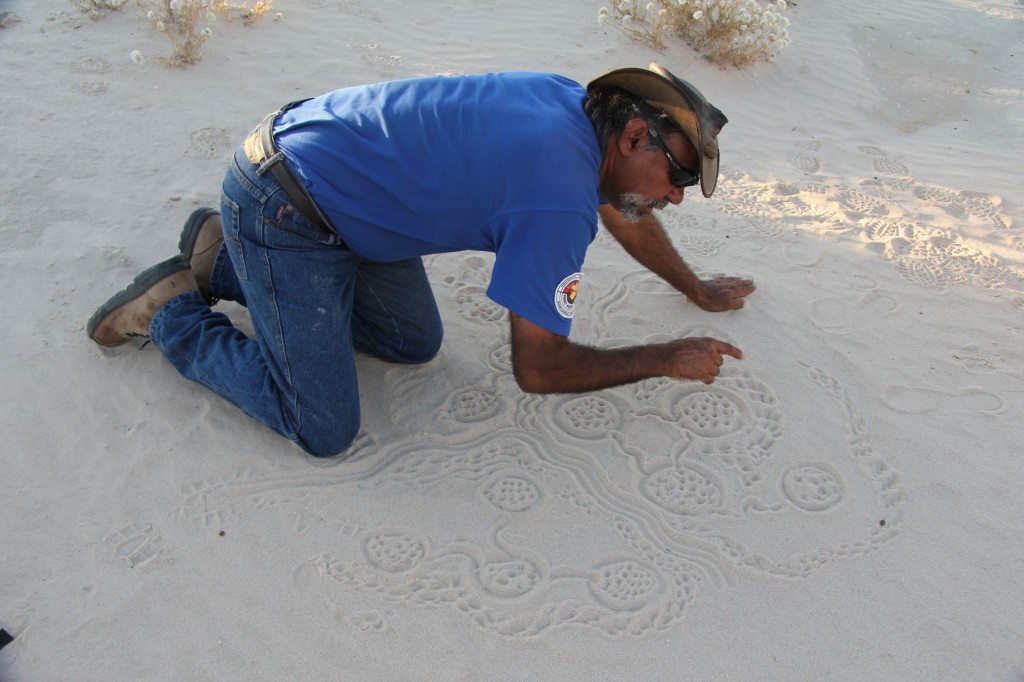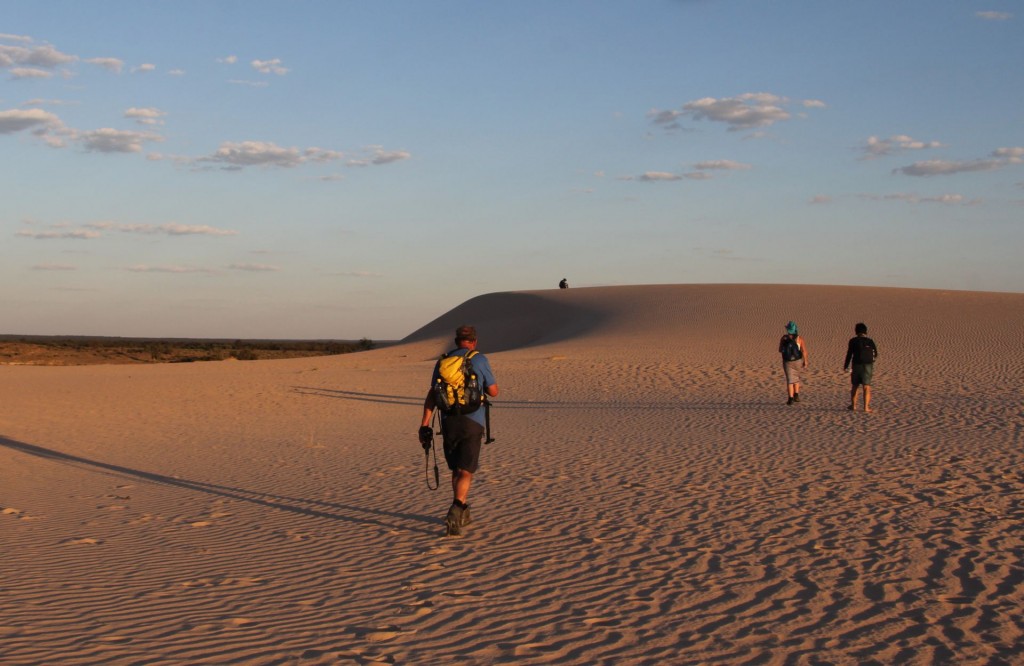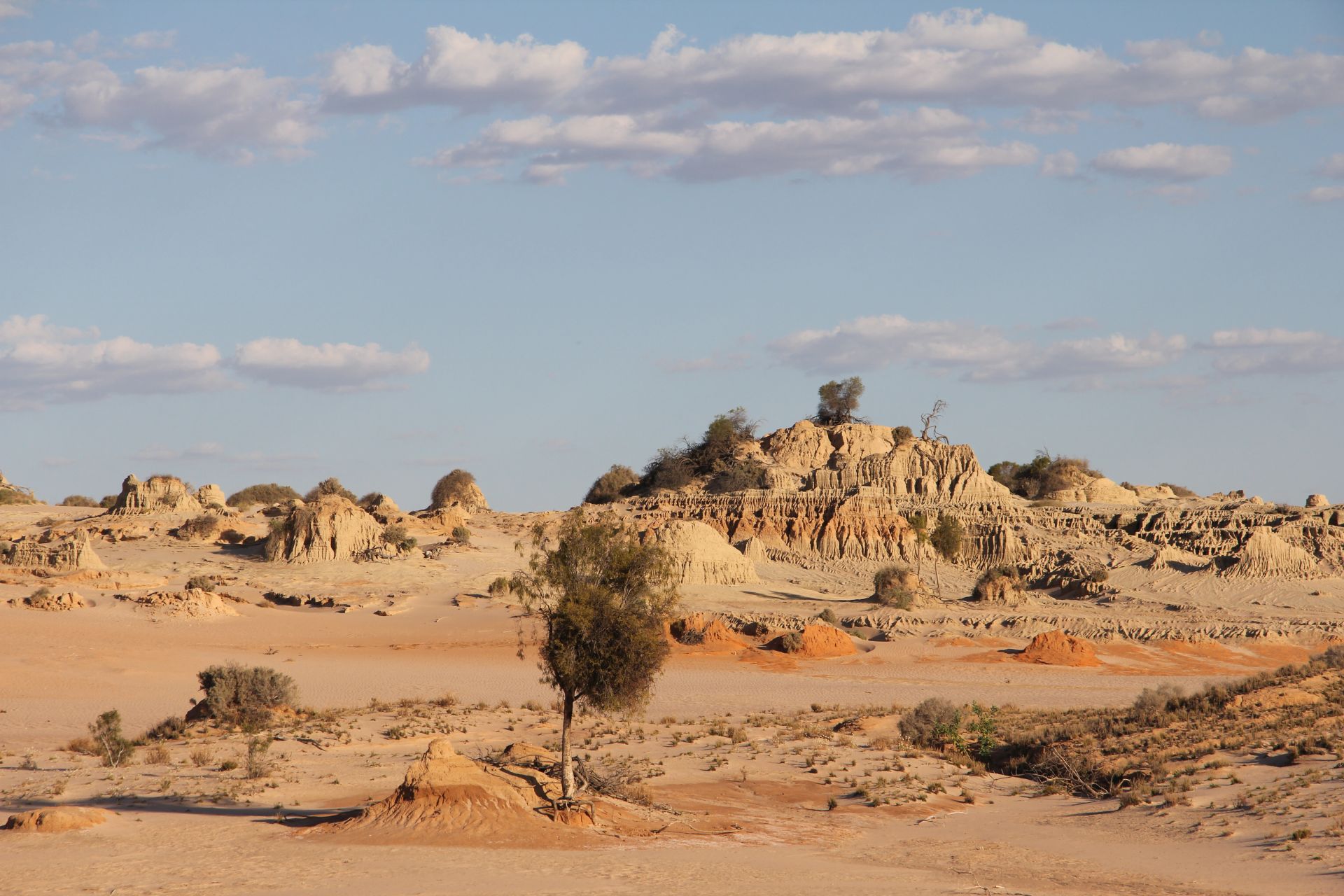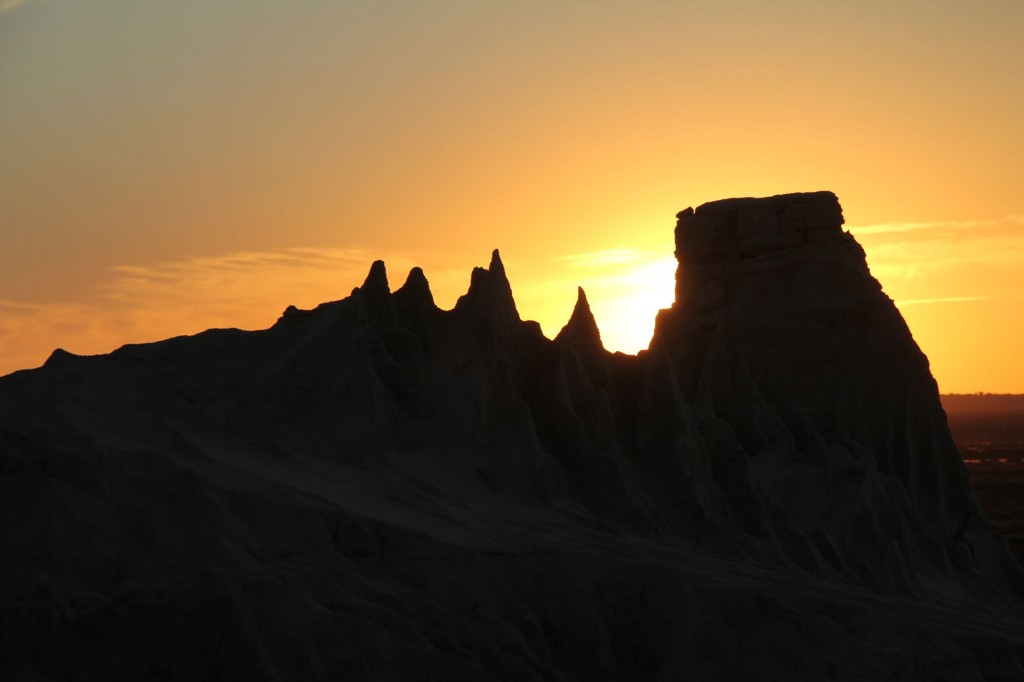 One of the most impressive tours we made on our journey through Australia was, no doubt, the guided tour to Lake Mungo, which was listed as a World Heritage site back in 1981 and is now documented as one of the oldest places for human occupation dating back to Aboriginal life from around 60,000 years ago.
One of the most impressive tours we made on our journey through Australia was, no doubt, the guided tour to Lake Mungo, which was listed as a World Heritage site back in 1981 and is now documented as one of the oldest places for human occupation dating back to Aboriginal life from around 60,000 years ago.
Our guide for the day trip was Graham Clarke, a traditional Paakantyi Aboriginal, who took us by 4WD to Mungo National Park, a distance of around 110 km from Mildura, a town in the outback of New South Wales. This dirt road connects huge cattle stations and ends at the Mungo Information Centre and the historical woolshed that was built by Chinese laborers back in 1896. During the trip, the guide told us about the history and “dream time” culture of his ancestors. We learned a lot about the “stolen generations”, thousands of half-caste Aboriginals who were taken away from their families to be educated by white people in mission schools: such a cruel practice was not abandoned until 1970!
 Together with Graham, we visited Western Lookout, a viewpoint from where we could overlook Lake Mungo. He told us that the lakes dried up around 18,000 years ago. The shores known as “The Walls of China” or “lunette” for its 30 km crescent shape of sand dunes still show clear evidence of the presence of Aboriginal people as they sat around the once full lake. Now with the natural erosion, the shoreline stands with eroding pinnacles of sand and clay in vibrant colors of the earth and breathtaking sceneries.
Together with Graham, we visited Western Lookout, a viewpoint from where we could overlook Lake Mungo. He told us that the lakes dried up around 18,000 years ago. The shores known as “The Walls of China” or “lunette” for its 30 km crescent shape of sand dunes still show clear evidence of the presence of Aboriginal people as they sat around the once full lake. Now with the natural erosion, the shoreline stands with eroding pinnacles of sand and clay in vibrant colors of the earth and breathtaking sceneries.
After lunch, late in the afternoon, we went on a walk through the Walls of China and Graham showed us ancient remnants and campfires, bones, petrified trees and branches. We saw traces of emus and kangaroos in the sand and we were so impressed by the magic forms of the sand dunes that we even succeeded in ignoring hundreds of flies that were circling around our heads, trying to get into our nose, mouth and ears.
 By drawing circles in the sand, Graham tried to explain the philosophy of the Aboriginals: Life does not have a beginning and an end, nature is eternal. Everything in nature is moving in circles that are growing wider and wider. Nature is in perfect equilibrium and white men who try to change the natural environment make big mistakes and they will certainly have to pay for that in the future.
By drawing circles in the sand, Graham tried to explain the philosophy of the Aboriginals: Life does not have a beginning and an end, nature is eternal. Everything in nature is moving in circles that are growing wider and wider. Nature is in perfect equilibrium and white men who try to change the natural environment make big mistakes and they will certainly have to pay for that in the future.
After a magnificent walk through the desert, we watched the sunset across the dry lake. The sand dunes changed color – from yellow to orange and pink, and the sun looked like a fire ball.
On our way home as the night turned black and thousands of stars appeared in the sky, we saw many kangaroos, rabbits and cattle on the road. Graham appeared to be an experienced driver and we were lucky to avoid a crash with some of these big animals. It was very late when we arrived at the camping site. The day in Mungo National Park was unforgettable for both of us!

